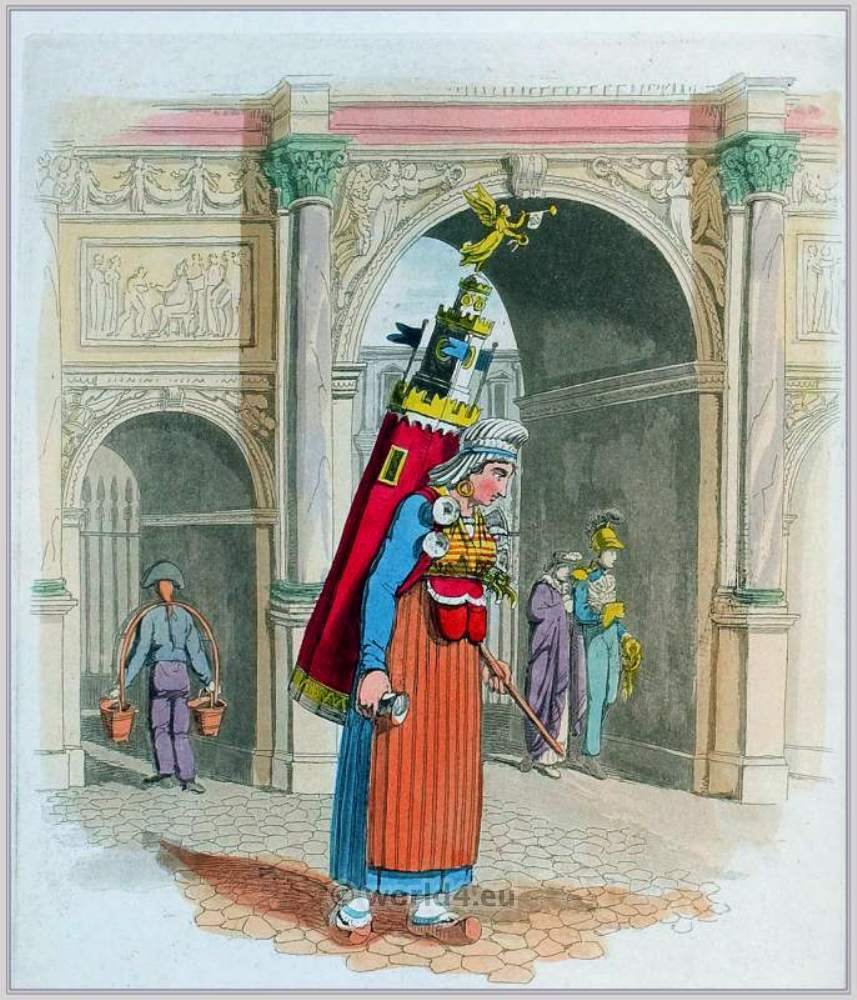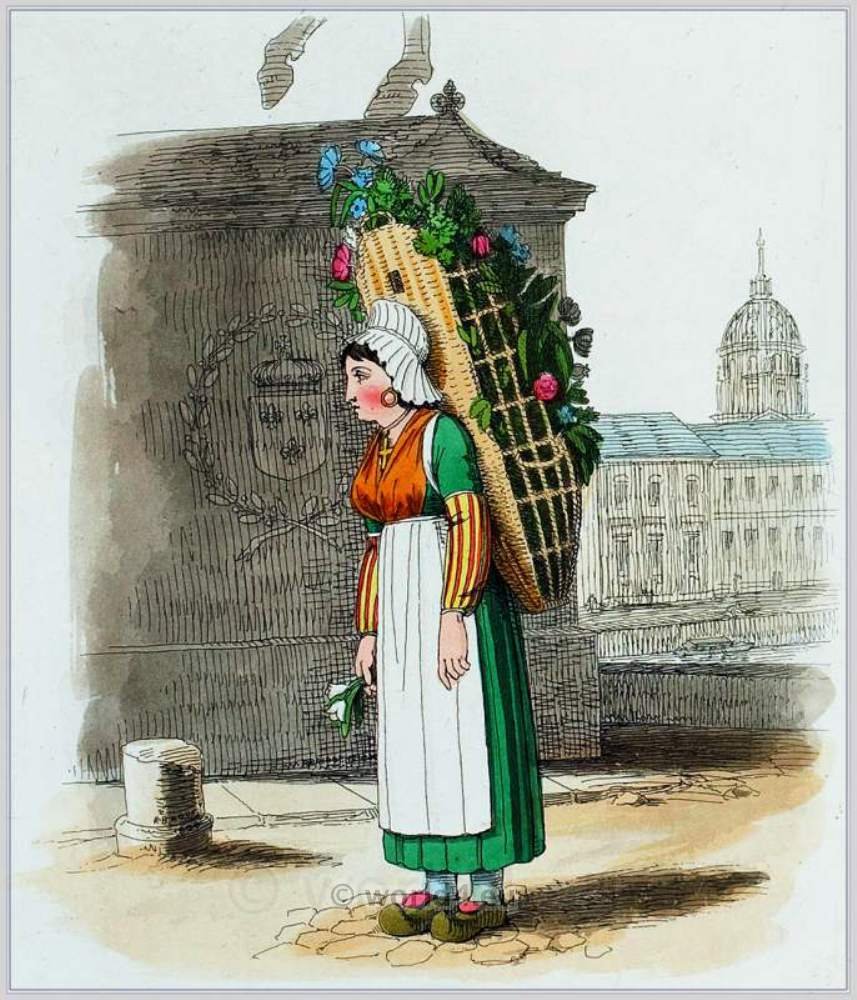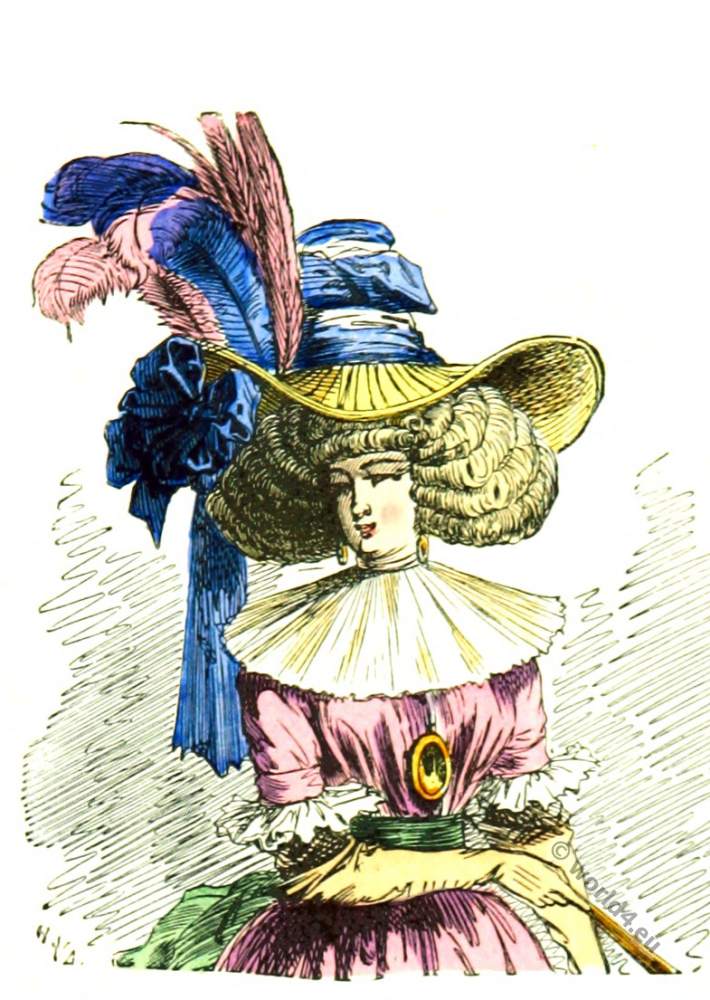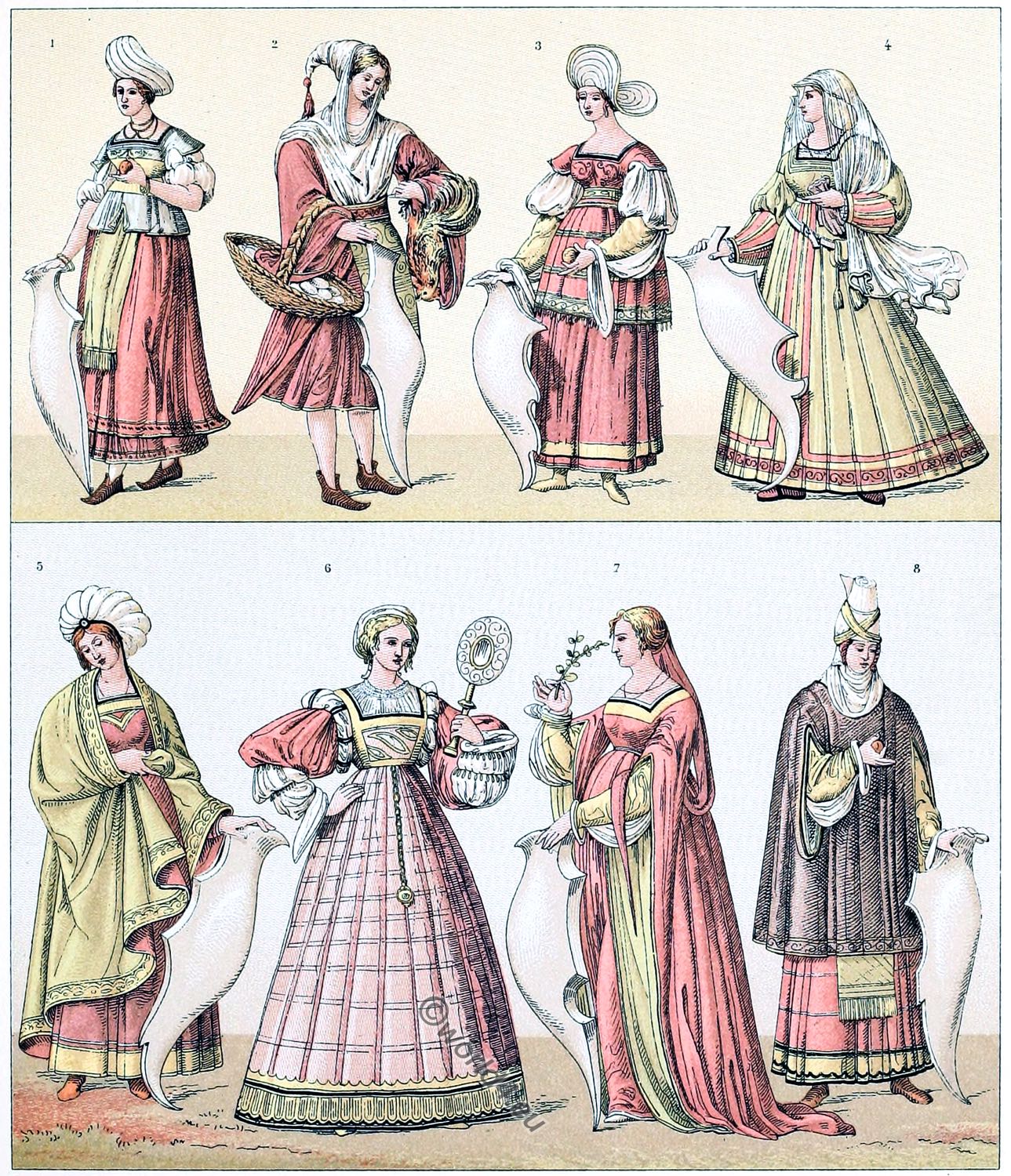A female of Vercelli.
THIS is one of the most peculiar head-dresses belonging to the lower orders in Italy; unlike the others, it hides the shape of the head, and almost seeks to rival the Egyptian scull mask in its power of effacing lines divine, at the same time that it is superior to it in allowing a greater diversity of arrangement in its unmeaning folds.
Pins are passed through the hair, which extend a considerable way beyond its outline, and bear up a piece of linen, which is allowed to fall upon the shoulders.
In the back ground is seen a little child placed in a box, making it look like one of those gods, who are never intended to move, and therefore are represented without legs, the Termini; but whom lawyers and soldiers will cause to run although sculptured in the solid rock. The man bearing a pole upon his shoulders, with live ducks, &c., resembles very much our itinerant rabbit cryers.
Source: Sketches Illustrative of the Manners and Costumes of France, Switzerland and Italy. Illustrations by Richard Bridgens. Text by J.W. Polidori London. Baldwin, Cradock & Joy. 1821.
Related
Discover more from World4 Costume Culture History
Subscribe to get the latest posts sent to your email.







